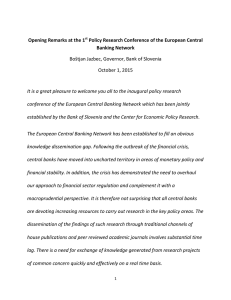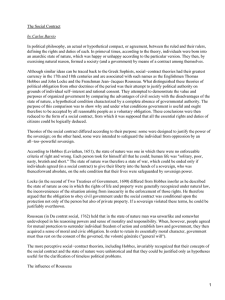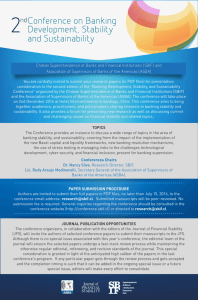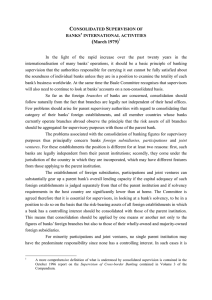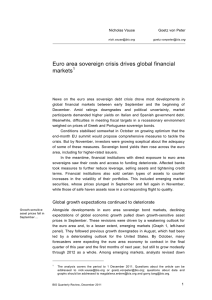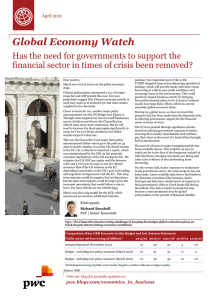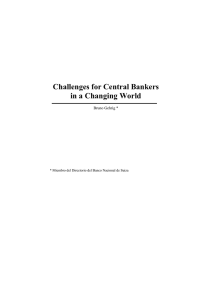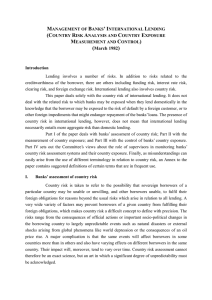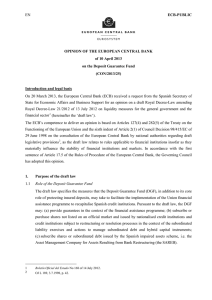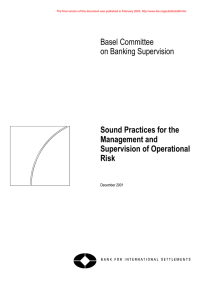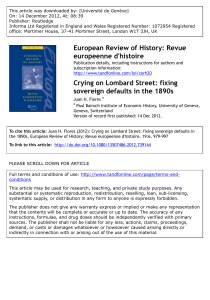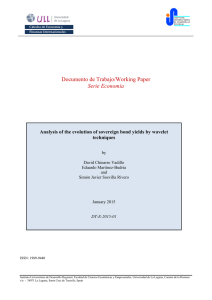Banks` Net Exposure to Home Sovereign
Anuncio
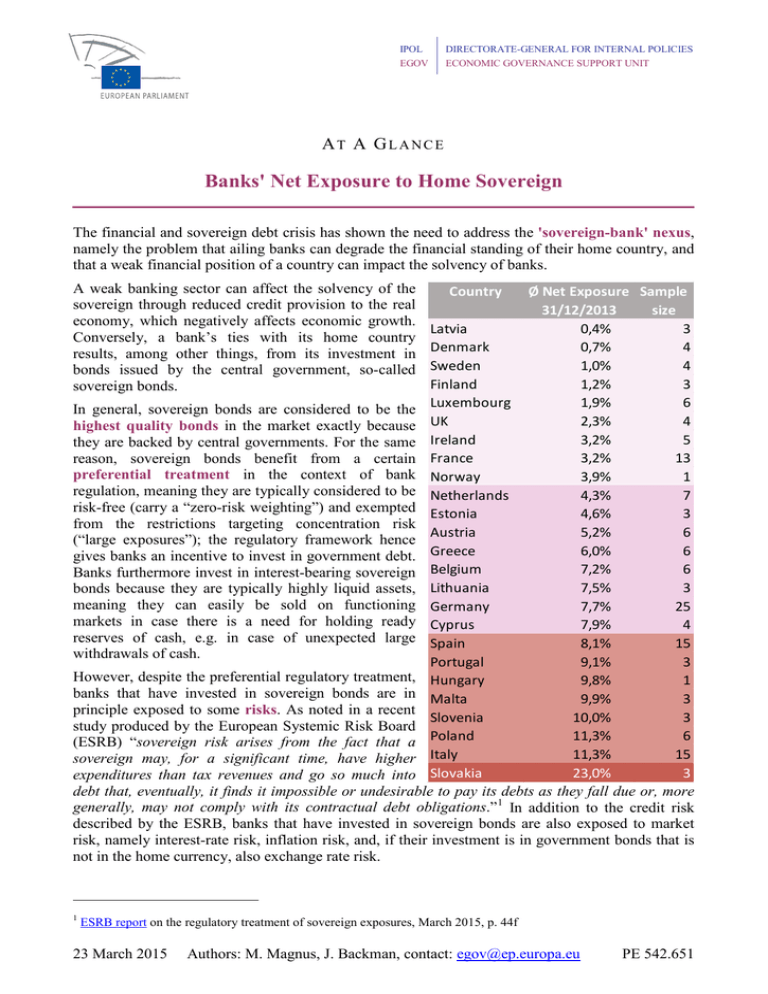
IPOL DIRECTORATE-GENERAL FOR INTERNAL POLICIES EGOV ECONOMIC GOVERNANCE SUPPORT UNIT AT A GLANCE Banks' Net Exposure to Home Sovereign The financial and sovereign debt crisis has shown the need to address the 'sovereign-bank' nexus, namely the problem that ailing banks can degrade the financial standing of their home country, and that a weak financial position of a country can impact the solvency of banks. Ø Net Exposure Sample 31/12/2013 size Latvia 0,4% 3 Denmark 0,7% 4 Sweden 1,0% 4 Finland 1,2% 3 1,9% 6 In general, sovereign bonds are considered to be the Luxembourg 2,3% 4 highest quality bonds in the market exactly because UK 3,2% 5 they are backed by central governments. For the same Ireland 3,2% 13 reason, sovereign bonds benefit from a certain France preferential treatment in the context of bank Norway 3,9% 1 regulation, meaning they are typically considered to be Netherlands 4,3% 7 risk-free (carry a “zero-risk weighting”) and exempted Estonia 4,6% 3 from the restrictions targeting concentration risk Austria 5,2% 6 (“large exposures”); the regulatory framework hence 6,0% 6 gives banks an incentive to invest in government debt. Greece 7,2% 6 Banks furthermore invest in interest-bearing sovereign Belgium 7,5% 3 bonds because they are typically highly liquid assets, Lithuania meaning they can easily be sold on functioning Germany 7,7% 25 markets in case there is a need for holding ready Cyprus 7,9% 4 reserves of cash, e.g. in case of unexpected large Spain 8,1% 15 withdrawals of cash. Portugal 9,1% 3 However, despite the preferential regulatory treatment, Hungary 9,8% 1 banks that have invested in sovereign bonds are in Malta 9,9% 3 principle exposed to some risks. As noted in a recent Slovenia 10,0% 3 study produced by the European Systemic Risk Board 11,3% 6 (ESRB) “sovereign risk arises from the fact that a Poland 11,3% 15 sovereign may, for a significant time, have higher Italy 23,0% 3 expenditures than tax revenues and go so much into Slovakia debt that, eventually, it finds it impossible or undesirable to pay its debts as they fall due or, more generally, may not comply with its contractual debt obligations.” 1 In addition to the credit risk described by the ESRB, banks that have invested in sovereign bonds are also exposed to market risk, namely interest-rate risk, inflation risk, and, if their investment is in government bonds that is not in the home currency, also exchange rate risk. A weak banking sector can affect the solvency of the sovereign through reduced credit provision to the real economy, which negatively affects economic growth. Conversely, a bank’s ties with its home country results, among other things, from its investment in bonds issued by the central government, so-called sovereign bonds. 1 Country ESRB report on the regulatory treatment of sovereign exposures, March 2015, p. 44f 23 March 2015 Authors: M. Magnus, J. Backman, contact: egov@ep.europa.eu PE 542.651 In 2014, the European Banking Authority (EBA) and the European Central Bank (ECB) assessed in a joint exercise the financial strength of Europe's most significant banks. The ECB and EBA subsequently published detailed information at the level of individual banks, including information on banks' exposure towards sovereigns (reference date: 31/12/2013). Using the ECB and EBA data, the adjacent map and the table overleaf summarise the exposure of banks to home sovereigns (calculation based on their net direct position in relation to their total assets), with averages on country level weighted according to the size of each bank in the country sample. Please be aware that the average calculation blurs the fact that within some country samples there is considerable dispersion as regards individual bank's exposures to their home sovereign. Map: Banks’ average Net Exposure to Home Sovereign as at 31/12/2013 DISCLAIMER: This document is drafted by the Economic Governance Support Unit (EGOV) of the European Parliament based on publicly available information and is provided for information purposes only. The opinions expressed in this document are the sole responsibility of the authors and do not necessarily represent the official position of the European Parliament. Reproduction and translation for non-commercial purposes are authorised, provided the source is acknowledged and the publisher is given prior notice and sent a copy. © European Union, 2015 PE 542.651 2
